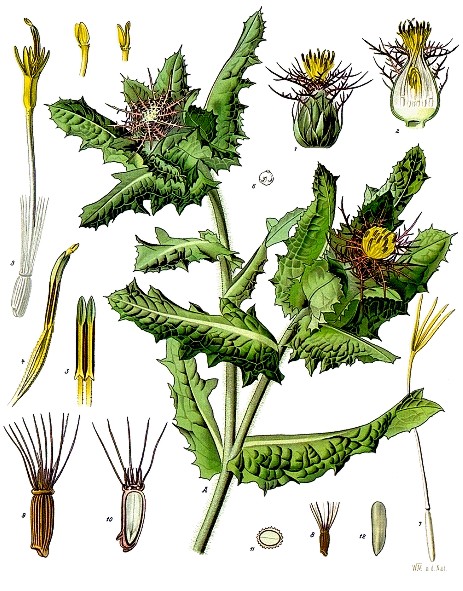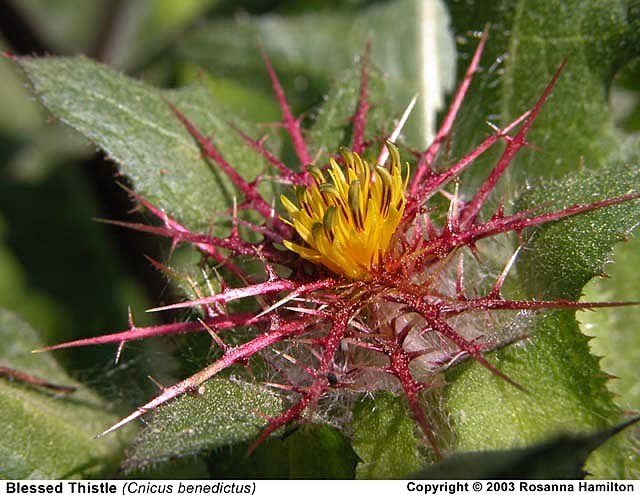Lessico
Cardo benedetto
Cnicus benedictus

Il termine cardo - in latino carduus - deriva dalla radice indoeuropea *kars-, punzecchiare, graffiare. Il cardo benedetto Ŕ un'erbacea della famiglia Composite, detta anche cardo santo, comune lungo le strade e nei luoghi incolti e sassosi d'Europa.
Dai frutti e dalle foglie viene estratta la cnicidina, sostanza amara di natura glicosidica con proprietÓ lassative, toniche, sudorifere e stomachiche. Si usa tradizionalmente come disinfettante delle ferite e antinfiammatorio. Il cardo benedetto - blessed thistle in inglese - ha ricevuto nomi scientifici diversi, tra i quali Ŕ poi prevalso quello di Cnicus benedictus datogli da Linneo. Tali nomi erano: Calcitrapa lanuginosa Lam. / Carbenia benedicta Benth et Hook / Carduus benedictus / Centaurea benedicta L.

History
Folk medicine utilized blessed thistle tea for digestive problems, including gas, constipation, and stomach upset. This herb was also used for liver and gallbladder diseases, in a similar way as its well-known relative, milk thistle. Monks once grew blessed thistle as a cure for small pox. Early herbalists believed that the herb was a cure-all. They noted that the plant could both prevent and cure headache, provoke sweat, help memory, strengthen the heart and stomach, and cure external problems such as festering sores, boils, and the itch. Nineteenth century herbalists prescribed an infusion, or tea, made from the plant tops as a treatment for fevers and for liver and respiratory ailments.
www.holisticonline.com